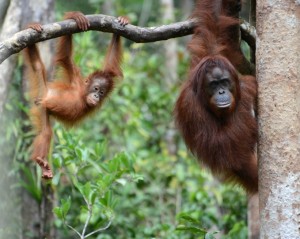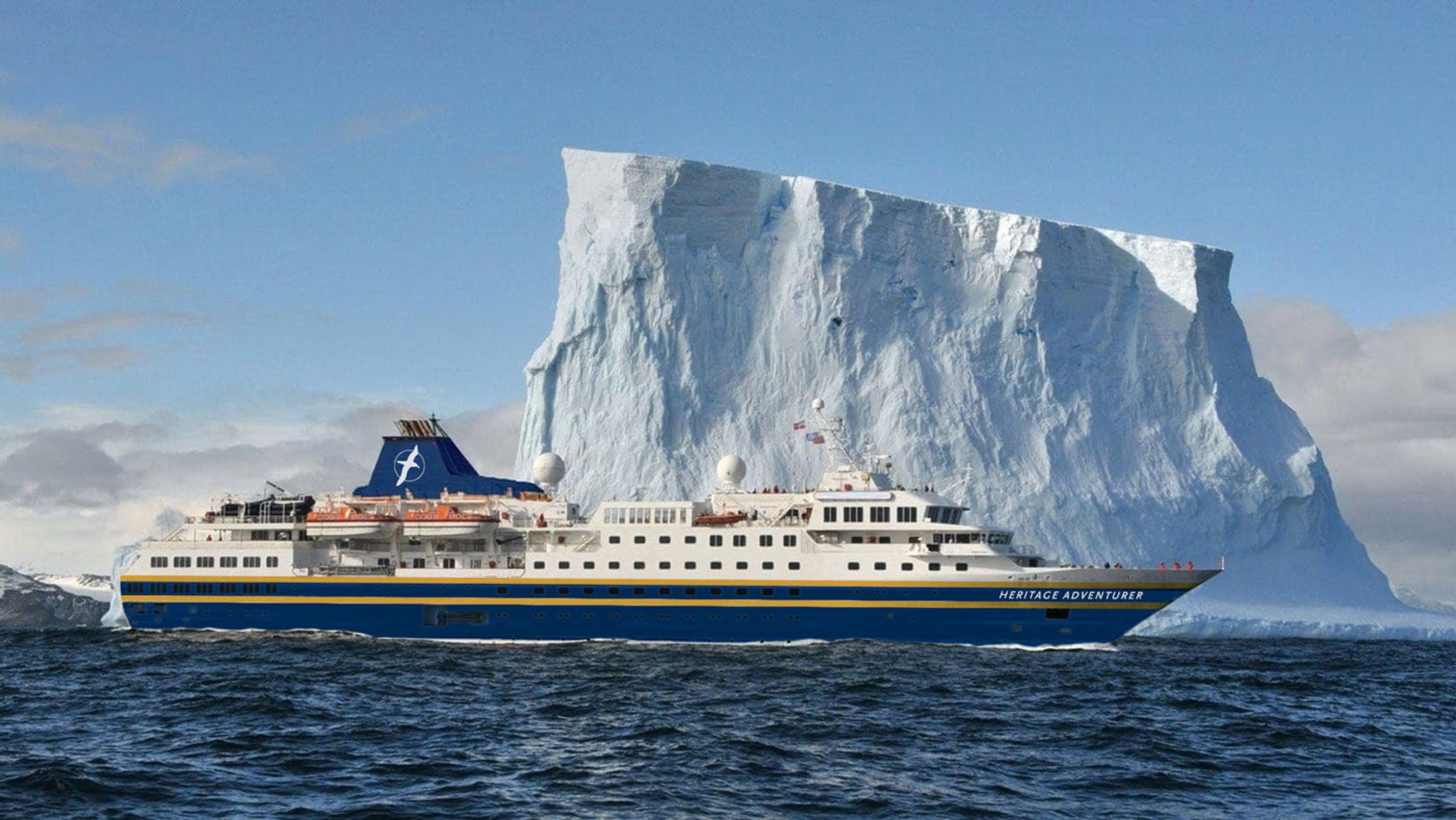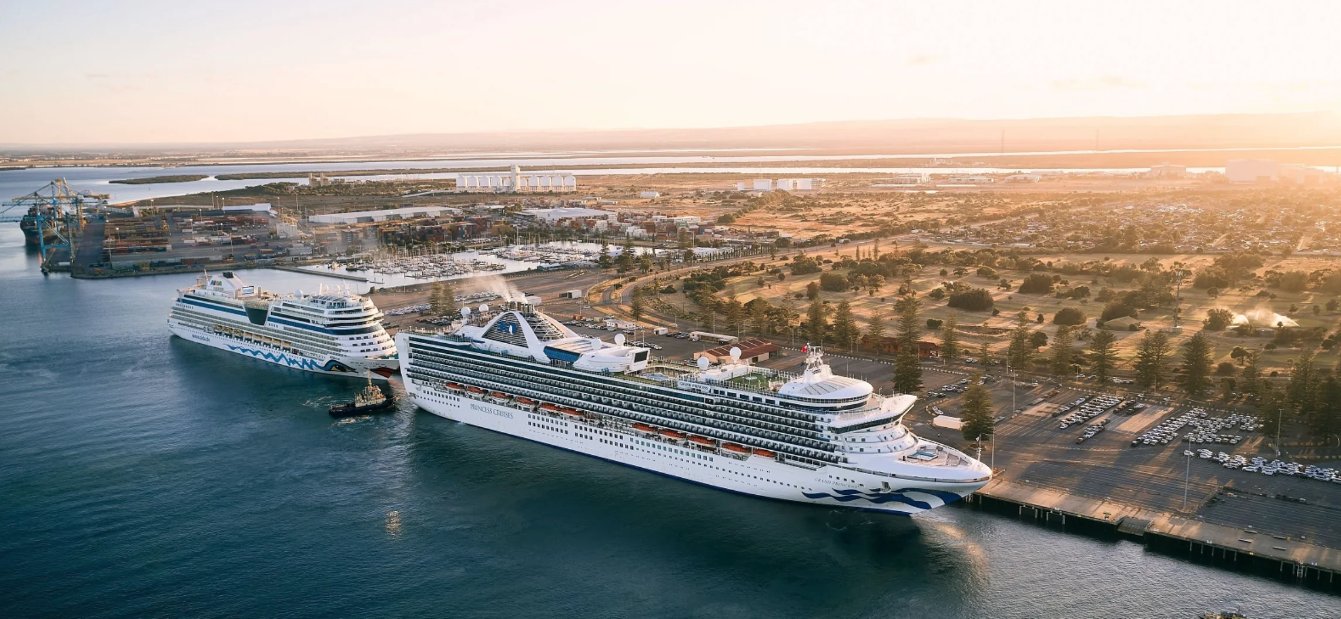On Saturday the orang-utan leapt from the branch and fastened his long arms around my neck, pressing his face into my shoulder, his long red hair tickling my nose. I waited for the expected bite but it didn’t come so I looked down to see big liquid eyes looking up into mine, ready for some well-deserved recognition of his impressive agility. He was only three years old (about six in human years) so he wasn’t heavy. But the moment of tenderness soon passed and he was wriggling to move onto the next adventure.
We were at the orang-utan care centre outside Kumai that was set up in 1997 for 40 orphans. But by the time it was built it had 80. Subsequent forest fires and clearing across Kalimantan have seen the orphan population grow to over 300. There are only three ways to gain access to the centre: volunteer to work here for several months, or come on one of the infrequent tours organised by OFI (Orang-utan Foundation International), or come with Orion Expedition Cruises that has a special relationship with OFI.
Orion has been working with OFI, most recently to buy more land in which to release orang-utans and so has access denied to others. That’s why we are visiting the young orangs in their jungle play area. We quickly become de facto climbing walls and swings. The bonds we immediately establish are heart melting. I defy anyone to hold a wriggly, tubby-tummied, sparcely red-haired very young orang without falling a little bit in love. Then they hold your gaze with a mix of warmth and mischief . . . When I tickled one girl’s tummy as she lay on the ground she silently shrieked in laughter.
There are two distinct stages in an orang-utan’s life. Until seven years of ages they are attached to their mothers and still breast feed. Then they become largely solitary in the forest. The young orphans have probably seen their mothers killed and are desperate for touch and affection – over 200 volunteers provide that. But when they are older and spend most of their time in the forest we are seen merely as an opportunist source of food. We met both young and adolescent groups and, while the young ones were almost completely cute, the older ones were looking for whatever we had in our pockets. Zips and buttons were no impediment to clever probing fingers. And, for the older ones, incontinence seems to come and go upon demand and the maximum inconvenience it can cause. For quarantine reasons we weren’t allowed into the nursery area.
While the brief visit was one of the travel highlights of my life – and that of everyone else on board that I asked – it took some planning. We were advised before we left Australia that we needed to be certified TB-free to be allowed in with the young orangs – and fortunately we passed that test and didn’t have any other respiratory diseases that we could pass trans-species. We then worried throughout the voyage that we might have picked up some bug in flight but fortunately we hadn’t.
The extent of the orphaned orang-utan crisis brought up the problem caused by clearing the jungles of Borneo to develop palm oil plantations. There’s more information about this on the website of the OFI: www.orangutan.org.
The best help we can give from Australia is to avoid buying food with palm oil in it but it’s often generically described as “vegetable oil” and it’s ubiquitous in many, many foods. Or, more directly, we can donate money to help the OFI buy forest corridors from the villagers so they remain a sanctuary for orang-utans. Already we’ve done both, as so many of us on the ship vowed to do.
It’s interesting to learn that chimpanzees are more closely related to humans and share the human aggression that orang-utans lack. I consider myself very fortunate that I’ve been able to play with and hug some of our closest great ape cousins. I’m eternally grateful to Orion for making such a special wildlife experience possible.
Words and photo: David McGonigal








